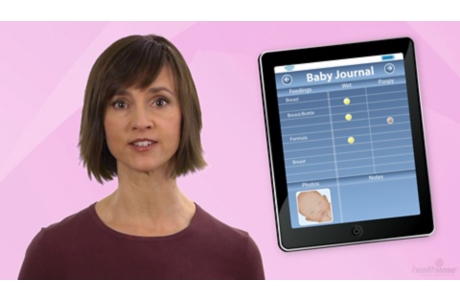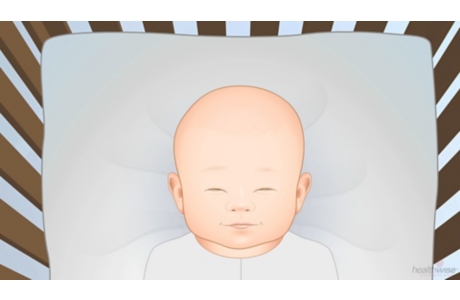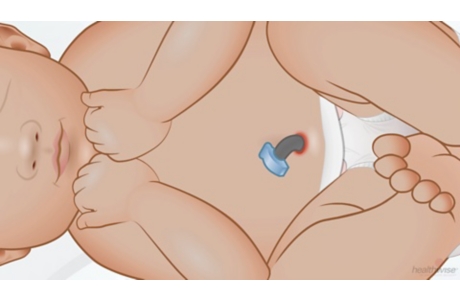Breastfeeding: Weaning a Baby
Overview

There are two ways to wean. Gradual weaning happens over time. It lets your baby have more control over when to stop breastfeeding. Abrupt weaning happens all at once. Which style you use will depend on your preferences, why you plan to wean, and how often your baby breastfeeds.
Gradual weaning
One way to let a baby control weaning is through the "don't offer, don't refuse" method. This means that you never offer to breastfeed your child. But you don't refuse when your child asks or shows a desire to breastfeed.
This can be a slow process. But when you're committed to weaning and provide encouragement, your baby can wean successfully and happily.
These tips may help you gradually wean your baby:
- Make your breasts less available for nursing.
Stop wearing nursing clothing such as nursing bras and tops with nursing slits. Wear more layers of clothing, or wear clothing that is less easily adapted to nursing. The baby may demand to nurse less often because of the lack of easy access. This technique is usually combined with other techniques.
- Shorten each breastfeeding session before stopping it completely.
A baby may just need a minute or two at the breast, more for comfort than for food. When the baby has had a minute or two, urge the child to stop and interest them in something else.
- Postpone breastfeeding sessions.
Tell your baby that you'll nurse later, such as after you finish preparing dinner. This will space out sessions until you can eventually postpone a whole nursing session until the next one. It may also allow your baby to become distracted before the breastfeeding ever begins.
- Substitute food, drinks, or comfort for breastfeeding.
If your child still uses breastfeeding as a primary way of satisfying hunger or thirst, be ready with other foods and drinks before your child asks to breastfeed. (Milk or water is better than juice because of the high sugar content of juice.) If your baby isn't hungry or thirsty, encourage the use of a comfort object, such as a stuffed animal, blanket, or doll. Offer it often. Also substitute close cuddling without breastfeeding. A child may fear that weaning means losing that comforting sense of being held.
- Distract your baby.
Make life so interesting and busy that your baby forgets to ask to breastfeed. Read a book to your baby while holding them on your lap (which provides close contact). Or suggest a walk, a ride on a tricycle, or a trip to a playground or sandbox. Distractions can be time-consuming, but they work well.
Abrupt weaning
You may prefer to abruptly wean your baby from the breast. This approach may be best suited for a baby who nurses fewer than 3 times a day.
When weaning abruptly, choose a time when you don't expect other major changes in your or your baby's life and when you have extra time to spend with your child.
The following tips may help.
- Say "no," and offer distractions.
Try reading a book while holding your baby on your lap. This provides the close contact your child wants. Or suggest a walk, a ride on a tricycle, or a trip to a playground or sandbox.
- Make your breasts less available for nursing.
Stop wearing nursing clothing such as nursing bras and tops with nursing slits. Wear more layers of clothing, or wear clothing that is less easily adapted to nursing.
- Let someone else take care of your baby for a few days.
Your child should stay with a trusted caregiver, such as a spouse, grandparent, or other family member. Since you aren't available for breastfeeding, your child will adjust to the other caregivers. Over time, your child will come to accept that breastfeeding isn't needed. If you are gone for less than a week, your child may ask to breastfeed again when you return. But your child is likely to accept a refusal without too much complaining.
Credits
Current as of: October 24, 2023
Author: Healthwise Staff
Clinical Review Board
All Healthwise education is reviewed by a team that includes physicians, nurses, advanced practitioners, registered dieticians, and other healthcare professionals.
Current as of: October 24, 2023
Author: Healthwise Staff
Clinical Review Board
All Healthwise education is reviewed by a team that includes physicians, nurses, advanced practitioners, registered dieticians, and other healthcare professionals.
This information does not replace the advice of a doctor. Healthwise, Incorporated, disclaims any warranty or liability for your use of this information. Your use of this information means that you agree to the Terms of Use. Learn how we develop our content.





